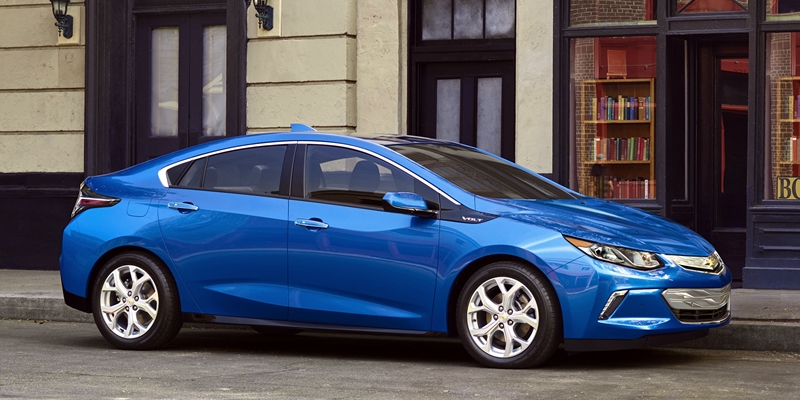Chevrolet has redesigned the Volt, so car reviewers are once again writing about the Volt. Some will note that the Volt’s base price ($33,995) is twice as much as that of the Cruze ($16,995), though they share a platform and are about the same size. This seems like far too much to pay for the Volt’s raison d’être: the ability to drive about 53 miles before the gas-powered “range extender” kicks in. But does the Volt really cost twice as much to buy as the Cruze?
This is the sort of question TrueDelta’s price comparison tool was designed to answer. Among other things, our pricing includes the $7,500 federal tax credit for which Volt buyers are eligible. To take this credit directly, buyers must owe at least $7,500 in federal taxes. But there’s a way to both evade this requirement and get the credit right away rather than wait until tax time: lease the car. This tax credit eliminates nearly half of the price difference between the volt and the Cruze. Clearly it will become much more difficult to sell the Volt once the tax credit goes away, but we’re not there yet.
Some states also provide tax credits on plug-in hybrids and electric vehicles, but we don’t currently track these. If you live in such a state, remember to also factor in this amount.
Next, TrueDelta’s price comparison tool considers differences in standard equipment. Compare a base Volt to a base Cruze, and you’ll find that the former includes over $4,000 in additional standard features. Adjust for these and factor in the federal tax credit, and the difference comes to about $5,250, less than one-third the difference between the window stickers.
Of course, it’s possible to add options to both cars. Why not equip both cars with the desired features, then see what the difference is? With our tool, this is easily done using the “configure” menu near the top of the page.
A curious thing happens as soon as you add any options, even just an automatic transmission (standard on the Volt) to the Cruze: the $16,995 L trim disappears and the feature-adjusted price difference falls below $4,000. You cannot get any options on it. Given the number of people interested in a manual transmission Cruze with no options, you probably won’t find many $16,995 window stickers on Chevrolet dealer lots.
Next you’ll find that the Cruze LS isn’t offered with any options save an automatic transmission. Want alloy wheels, cruise control, or a rearview camera? While all of these are standard on the Volt, to get them on the Cruze you must step up to the LT trim level, which also includes a turbocharged 1.4-liter engine instead of a 1.8-liter engine. The the 1.4T engine is smoother, torquier, and more efficient, it bumps the price by about $700. A Cruze LT with automatic transmission and Technology Package lists for just $5,025 less than a base Volt, while still short about $1,800 in content. For example, the Volt comes standard with the latest-and-greatest headlamp tech–LEDs–while the Cruze isn’t even available with xenons. Adjust for these remaining content differences, and the difference falls to less than one-fifth the initial amount.
Maybe you also want leather upholstery, nav, a premium audio system, or blind spot warning. Whatever the configuration, once beyond a barebones Cruze the post-federal tax credit MSRP difference tends to be between five and six thousand dollars and the feature-adjusted difference tends to be between three and four thousand dollars. Not pocket change, to be sure, but far from “twice as much.” Is it worth this much to be able to drive about 53 miles on electricity? With gas prices at their current level, maybe, maybe not. But if gas prices increase again, the Volt’s additional cost will seem very reasonable.
Also, remember the tax credits offered by some states. With some of these, the Volt can even cost less than the Cruze, especially if feature differences are considered.
